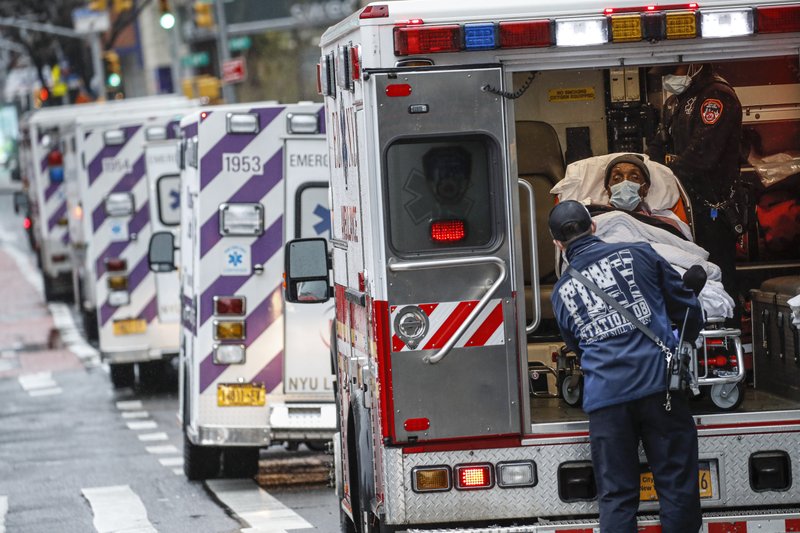The global coronavirus pandemic has created a huge need for health care in the U.S., but it also is delivering a devastating financial blow to that sector.
COVID-19 worries have kept patients away from doctors’ offices and forced the postponement and cancellation of non-urgent surgeries. The pandemic also has shut down large portions of the American economy, leaving many would-be patients without insurance or in a financial pinch that makes them curb spending.
All of this has forced hospitals, health systems and doctors to lay off staff, cut costs and hope a return to normal arrives soon.
“You couldn’t ask for a worse situation, really,” said Joe Antos, an economist with the American Enterprise Institute.
Health care provided the biggest drag on the U.S. economy in the first quarter. Spending on care fell at an annual rate of 18%, the largest drop for that sector among records going back to 1959.
Economists point to hospital systems, a key driver of the sector’s performance, as a big reason behind the drag from COVID-19, which initially hit some parts of the sector more intensely than others.
The nation’s largest hospital chain, HCA Healthcare, said its hospital-based outpatient surgery totals for last month were down about 70% through late April.
In many cases, hospitals that lose those profitable surgeries are gaining COVID-19 patients — and losing money on them. Those patients may require hospitals to expand intensive care units, spend more on infection control and stock up on gowns and masks, among other items.
The American Hospital Association estimated in a recent report that the nation’s hospitals and health systems will collectively lose more than $36 billion from March to June treating hospitalized COVID-19 patients.
When adding factors like lost revenue from postponed surgeries, the total balloons to more than $200 billion, said the association. Congress has set aside about $175 billion so far to help hospitals and other care providers, but the hospital association says more assistance is needed.
“We’re facing perhaps the biggest financial crisis in our history,” association CEO and president Rick Pollack said.
From the doctor’s office, the view also is bleak.
Dr. Seemal Desai said patient visits for his Dallas-area dermatology practice plunged about 85% after COVID-19 hit.
He started seeing patients over the internet with help from smartphone or tablet cameras. But that created fresh problems. Desai said some patients don’t have the technology to do online visits. Others hesitate because they aren’t sure their insurance will cover them.
Only about half the patients who were offered a telemedicine visit actually did one.
“You would think my volume would be shooting through the roof and people would be clamoring for it, but it’s completely the opposite,” Desai said.
Full Coverage: Virus Outbreak
The dermatologist cut expenses, including marketing, and he’s reduced some employee hours.
Nationally, the health care sector shed nearly 1.5 million jobs from February to April, or about 9% of its total, according to the federal Bureau of Labor Statistics.
A big chunk of that came from dentist offices. Preliminary data shows that employee totals for that slice of the sector sank by more than 500,000, or 53%.
Overall economic growth, as measured by the gross domestic product, fell at an annual rate of 4.8% in the January-March quarter even though the severe impact of the virus was only felt in the last couple of weeks of March.
The current quarter is expected to be much worse. The Congressional Budget Office forecasts that the GDP will plunge 40%. That would be four times the largest drop on quarterly GDP records that go back to 1947.
Even so, health care researchers expect hospitals, doctor’s offices and surgery centers to rebound gradually. But they’re not sure yet how much patient volume will return.
People who have lost jobs and insurance coverage may not make doctor visits unless they absolutely have to.
The Kaiser Family Foundation recently estimated that nearly 27 million people — or about 8 percent of the U.S. population — could have become uninsured at least temporarily between March and early May due to the loss of employer-sponsored insurance.
It also may take a while for some patients to become confident that a hospital or doctor’s office is safe enough to visit without catching COVID-19.
“People are just afraid to go to any medical setting right now,” Antos said, noting that the economy also could face another setback if infection rates spike again.
In Texas, Dr. Desai has pulled chairs out of his waiting rooms to increase social distancing for patients and staff. He’s also asking other patients to wait in their cars until the exam room has been sanitized.
The dermatologist got some government assistance in the first round of payroll protection loans, and that will help him for a few more weeks.
But he’s not expecting a quick rebound. It’s hard to rebuild patient volume when only two people can be in the waiting room at the same time.
“After another month I honestly have no clue whether we will be able to remain open,” he said.
(AP)












One Response
More typical AP Democrat talking points. It’s not the virus that has devastated the medical industry, it’s the lockdown. We were told that the hospitals had to be ready for the flood of Wuhan Disease patients that was coming, so they had to cancel all elective care. The flood never materialized, because the modellers were wrong as usual and the politicians were foolish to rely on them, so the hospitals lay idle and bleeding money and the patients who needed their care suffered or died.